The Best Fluffy Pancakes recipe you will fall in love with. Full of tips and tricks to help you make the best pancakes.
Pizza Stone Guide
A pizza stone is a round, rectangular, or square bakeware that is used to hold the pizza while baking in an oven. It helps cook the dough and crust evenly to achieve a firm golden brown crust when the pizza is completely baked – it aims to achieve the baking results of a pizza when baked using a brick oven. The pizza stone absorbs the moisture from the dough and distributes the heat evenly on the surface to achieve a nicely done crust. It comes in various diameters or sizes and has a thickness of at least half an inch. Here’s a comprehensive guide that can help you learn more about pizza stones:
Pizza Stone Materials and Descriptions
One of the many considerations that you need to keep in mind when choosing a pizza stone is the material. Natural materials are common because it conducts heat evenly and can also remove moisture to prevent a sticky surface. Clay, ceramic, cast iron, or cordierite are the best materials for a quality pizza stone.
Clay
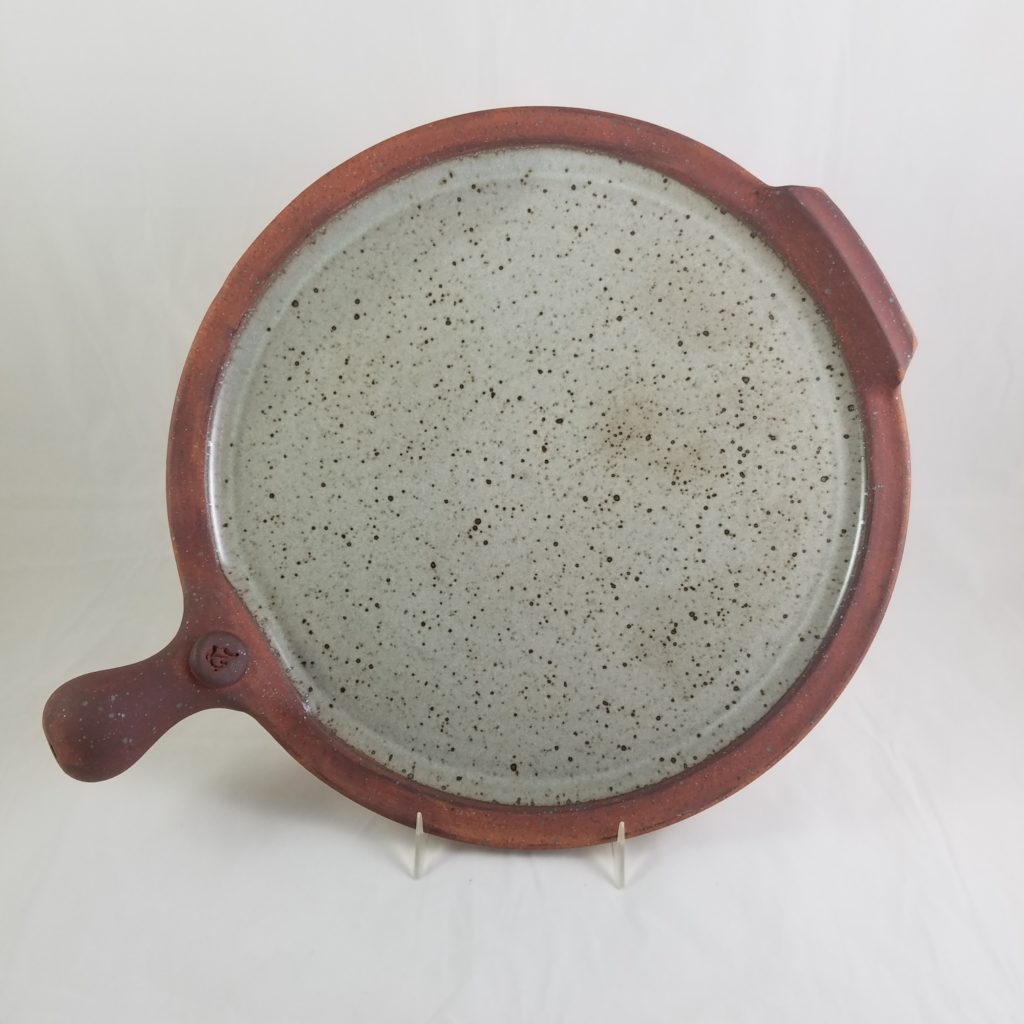
It is a classic stone that absorbs moisture which can result in a crispier crust. Clay is the best material if you want to achieve a crispy crust, but it takes a while to preheat and can be difficult to clean. The good thing is, you can do DIY clay pizza stone without spending too much. There are a few tutorials online that can be helpful.
Ceramic
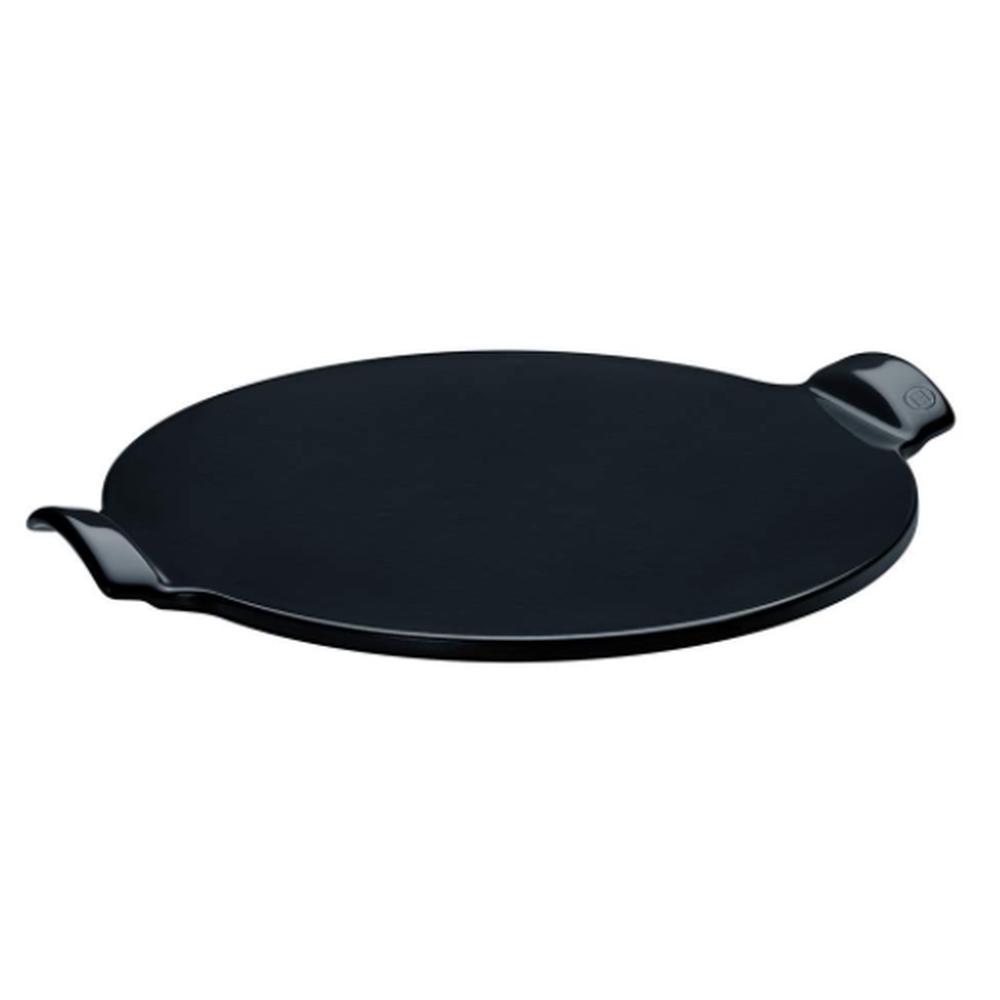
Ceramic pizza stones are the most cost-effective choice because it can last for many years when properly cared for. Ceramic heats evenly which makes an excellent choice for a pizza. But, it is susceptible to cracks when not preheated properly. The ceramic pizza stone is a great choice because it conducts high heat evenly which can help you achieve the best baking results.
Cordierite
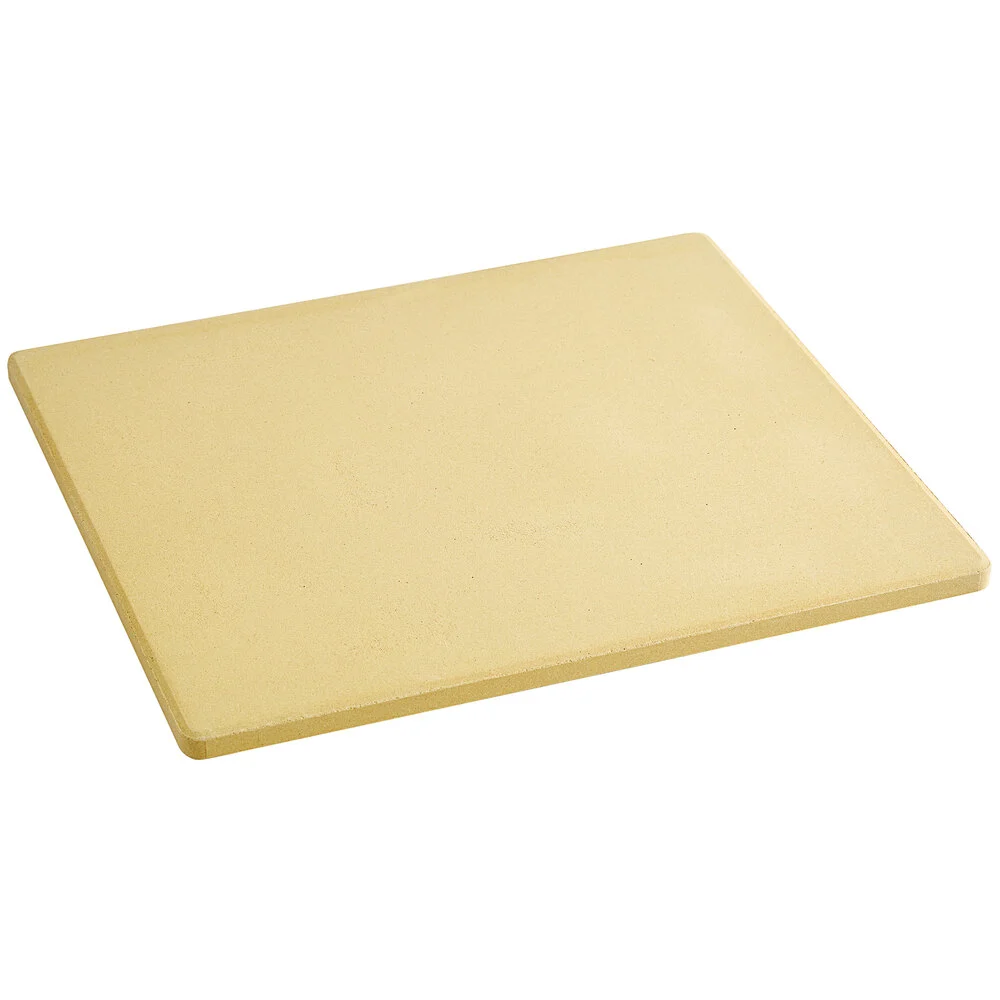
Cordierite pizza stones are the most expensive, yet durable. It can outlive ceramic and clay pizza stone. It is a durable material with thermal shock resistance – it can handle all the heat in your oven without breaking. So, choosing the cordierite as your pizza stone material is a practical idea.
Important: The pizza stone material is not the only factor to consider – size, accessories, durability and features are also important.
Choosing a pizza stones Size, Thickness, Materials.
There are many brands of pizza stones, available in many sizes, shapes, materials, so what should you look for when selecting a pizza stone?
Simply, when choosing a pizza stone, select a pizza stone that will fit into your oven. So know the width and depth of your oven before purchasing. And look for a pizza stone that you can store easily in your home kitchen without it becoming a hassle. The thicker the pizza stone, the better the heat retention of the stone but don’t select a stone that is too heavy to remember you need to be able to store it without having problems of moving it.
Pizza stones which are made from ceramic, have been around for decades, made from clay and fired in kilns, ceramic pizza stones are viewed as the cheapest option to turn your home oven into a professional pizza oven. Ceramic pizza stones conduct heat evenly, and if cared for, can last for years. However, they do chip easily, are susceptible to thermal shock and cracking.
Cordierite pizza stones are made from a naturally occurring mineral. This material can be heated to extreme temperatures without cracking. These stones are more expensive than ceramic pizza stones and can be heavy for some ovens.
Composite pizza stones are made with a combination of clay and other heat-tolerant ingredients. These are relatively more expensive but can be heated to high temperatures, tolerant to thermal shock and lighter than cordierite pizza stones.
When selecting a pizza stone, it is recommended to select a stone that is around 20 – 25mm thick. A thick pizza stone will absorb heat better than a thinner stone, however, they do take longer to preheat and can be heavy (5-12kg) A thick pizza stone not only absorbs heat better, but it also transfers the heat better and faster to your pizza base when cooking. This transfer of fast and hot heat is essential for certain styles of pizza.
Many pizza aficionados will recommend rectangular pizza stones rather than round ones. Rectangular pizza stones are can be placed and removed from your oven with ease, as well as giving you more space to work with, especially using a pizza slide. Rectangular pizza stones also can allow you to make more than one pizza at a time, you can bake larger square pizzas for parties and even bake other products like bread or calzones on them.
How to Use a Stone Pizza Properly
When using your brand new pizza stone for the first time, always wipe it down with a cloth dampened with water thoroughly, and allow it to air-dry overnight. This will remove any foreign debris, flavors or chemicals which could be on the surface of the pizza stone whilst being manufactured.
For cooking in your home oven. Position your oven rack in the top third of your, place your cold pizza stone on the positioned oven rack.
Turn your oven onto the highest setting temperature you can set your oven to. Preheat the oven at the hottest setting for at least one hour before cooking your pizza.
When your ready to cook, carefully slide your pizza from the pizza peel and onto your pizza stone. Immediately close the door and wait by the oven.
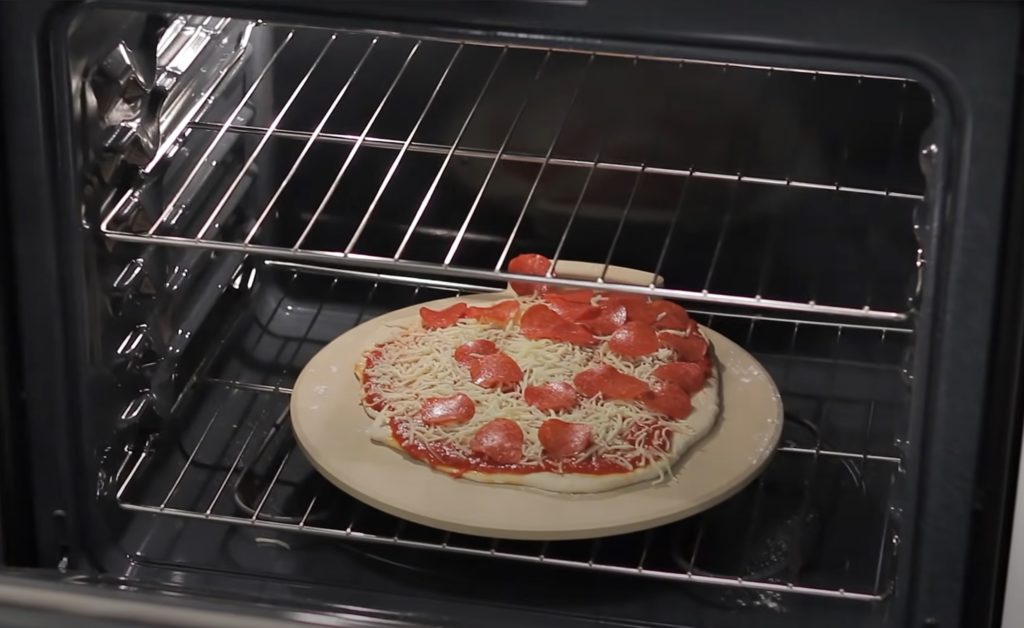
Wait patiently and watch your pizza cook. Now there is no correct time to cook your pizza, only can you tell it is ready is by watching. You know when your pizza is cooked when, when the crust is crispy on the bottom and when the bubbles which form on the outer edges of the pizza dough are deep brown in color. (Depending on how hot your oven gets 5-8 minutes).
Once your pizza has cooked, Use the pizza peel to remove the pizza from the oven. Place the cooked pizza onto a wooden serving board.
Turn off your oven and allow your pizza stone to thoroughly cool down, this can take 1-2hrs. Remember, to wear oven mitts when handling your pizza stone, and DO NOT touch whilst its being used or cooling, the pizza stone gets scorching hot when heated.
How to Season a Pizza Stone
Buying the pizza stone means you need to exert additional effort before using it. You need to season it first (max of two seasonings) before putting it to good use.
Here’s how to season a pizza stone:
- Clean the stone with hot water. Do not use soap since the stone material is porous. The soap can penetrate to the pores of the stone which can affect the taste of your pizza.
- Heat the oven to 450℉ for the oil to assimilate in the stone. The heat will produce a glossy sheen to the stone which prevents a sticky surface.
- Pour some olive oil onto the stone’s cooking surface.
- Place the pizza stone in the warmed oven and bake it until the oil is absorbed completely.
- Remove the stone from the oven and let it cool down.
- Repeat steps 3 to 5.
After the seasoning steps are done, the pizza stone is now ready for baking. But not just yet. You need to oil the surface before baking the pizza – it can help achieve golden brown and crispier crust.
How to Clean a Pizza Stone
Here’s how to clean a pizza stone, without damaging it:
You’ll need:
- Water
- Baking soda
- Soft cloth
- Plastic spatula
- Brush (soft)
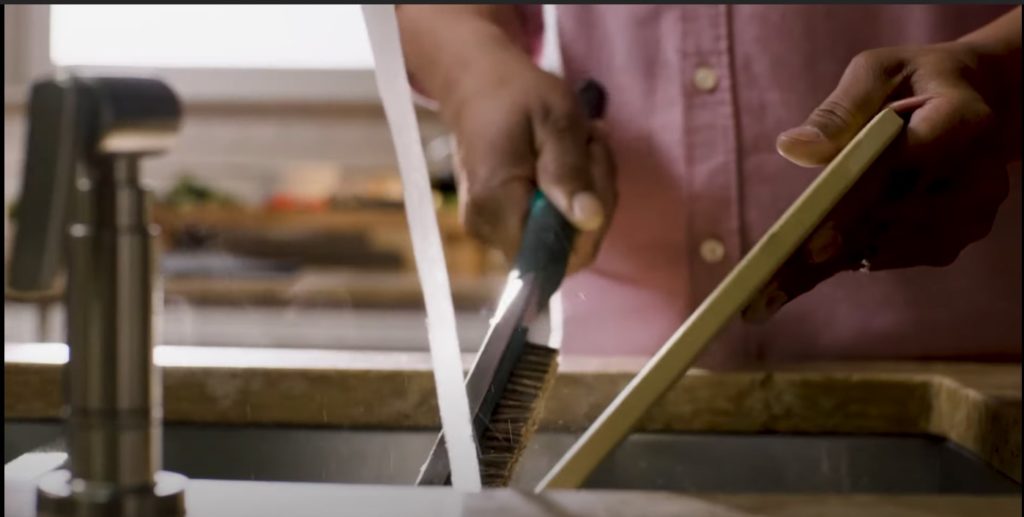
Steps:
- Let the pizza stone cool down before cleaning it.
- Scrape the surface lightly using a plastic spatula. Avoid using a knife or a metal spatula because it can scratch the surface of the pizza stone.
- Wipe the surface of the stone using a soft cloth.
- Make a baking soda paste and try spot treatment on the areas with crusty bits. It can help loosen the debris for easier removal.
- Scrub the surface gently using a soft brush. Do it in a circular motion.
- Wipe the surface of the stone using a damp cloth.
- If there are still some crunchy bits left, place the pizza stone in the oven and turn the heat up to 100℉. Let it cook for an hour to cook off the stubborn bits.
- Dry the pizza stone (for 1 or 2 hours) before using it again.
Again, it is important to keep your pizza stone safe. Do not use soap, chemicals and oils during the cleaning process.
Avoid these things to prevent crack and other damage to your pizza stone:
- Placing cool or cold food on the pizza stone. Your pizza stone is susceptible to thermal shock which can cause great damage.
- Allowing moisture into the pizza stone. The stone weakens when you wash it which can lead to cracks and other damages.
- Putting a cold pizza stone into the hot oven. Thermal shock happens when you place a cold pizza stone into the hot oven. It can cause fractures which can shatter your pizza stone to pieces.
- Using too much heat. As the heat builds up, the risk of shattering your pizza stone goes up.
In Conclusion
The idea behind the pizza stone is simple – the stone conducts and holds heat which makes the temperature steady allowing the pizza to cook evenly. It is also important to consider the material, features, accessories, size, and durability of the pizza stone. Choose the right pizza stone by considering your kitchen needs and preferences, as well. And handle your pizza stone with care for longer use!
Happy baking!



